How to Write a Blog Post: Practical Tips for Beginners

Blogs remain one of the most popular and effective ways to share information, ideas, and stories with a broad audience. Once your site consistently brings in organic traffic, you can even make money from blogging.
Writing your first blog post can be challenging because you need to pay attention to the quality and relevance of your content. However, with the right approach, writing a blog post can become an enjoyable and successful task.
In this article, we will show you how to write a blog post that is not only SEO-friendly but also relevant and helpful to your audience.
What Is a Blog?
A blog is a regularly updated website with articles written in an informal style. It can serve various purposes, from personal diaries to professional platforms. Blogs are a dynamic medium for sharing knowledge and engaging a global audience. To learn more about it, read our article on what is a blog.
How to Write a Blog Post
From planning to execution, here are the ten steps on how to write a blog post.
1. Understand Your Audience
A target audience is a specific group of people most likely to be interested in your content, products, or services. Focusing on this group maximizes the relevance and impact of your blog, helping you communicate ideas or sell products effectively.
Understanding your audience also helps you set the blog post’s style and tone of voice. For example, a casual tone works best for young adults or users who like to read blogs for entertainment.
In contrast, a formal and informative tone works best if you are targeting professionals in a specific industry.
To know who your target audience is, start by choosing your blog niche to gain relevant insights. Your niche will help shape your target audience profile. Then, consider these key aspects when profiling your audience:
- Demographics like age, gender, location, education, and income.
- Psychographics such as interests, behaviors, values, and lifestyle.
If you have an existing website, use Google Analytics or Google Ads to break down the demographics and psychographics of your audience. If you have social media accounts, check the data analytics on Instagram, Facebook, or TikTok for an idea of who your audience is.
After gathering the niche and the right audience profile, create a reader persona. Write down the audience persona to help you decide how to create a blog post that appeals to them.
2. Research Relevant Topics
Selecting a relevant blog topic helps boost your article’s visibility on search engine results pages (SERPs) and generates valuable blog post ideas that can entice readers.
There are two ways to find relevant topics. First, understand the search intent. Search intents are the purpose behind a user’s query on a search engine. It’s what the user hopes to find or achieve when they type in their search terms.
The main types of search intent are as follows:
- Informational. Looking for information or answers to questions.
- Navigational. Seeking a specific website or page.
- Transactional. Intending to make a purchase or complete another online transaction.
- Commercial. Comparing products or services before making a purchase decision.
Depending on the search intent, decide on the format of your blog posts. Informational content works well with listicles and guides, commercial with overviews of services or products, and transactional with reviews or tutorials.
We also recommend heading to Answer the Public to discover commonly asked questions and topics in your niche. The insights from this search listening platform can spark relevant blog post ideas that address your audience’s interests.
For example, below is the search result for the term “writing a blog post.”
After deciding on the topics, it’s time to do keyword research. Relevant keywords not only guide you when creating content but also improve the blog’s search engine optimization (SEO), giving you an advantage over competitors.
Suggested Reading
Discover more in-depth steps to do keyword research and optimize your content in this blog SEO tutorial.
Use tools like Google Keyword Planner or Ahrefs’ Free Keyword Difficulty Checker to find keywords associated with your blog post topic ideas. These keyword research tools provide valuable data on search traffic volume and keyword difficulty.
For new bloggers, we recommend aiming for keywords in your niche with a high traffic volume and a lower difficulty rating. This balance increases the likelihood of ranking higher in search results.
Below is an example of the term “how to find blog topics” and its keyword difficulty score based on Ahrefs’ checker.
Pro Tip
One of the best tips to start blogging quickly is to save your topic ideas and list of keywords in a document or content planner tool. In the long run, this can save you time when writing your next blog posts.
3. Plan Your Blog Post
The easiest way to plan your blog post is by creating an outline. This acts as a roadmap, helping to structure the flow of your post to enhance readability and engagement.
Before creating a blog post outline, start by shortlisting the relevant topics you’ve gathered and select one that aligns closely with your target audience and content strategy. After that, complete the following steps:
- Choose a blog post title. Writing headlines involves ensuring they are descriptive and concise to grab attention. It is the first element readers see, so make sure it accurately reflects the content of your post.
- Create a heading structure. Use clear headings and subheadings to organize your content and help readers navigate your post.
- Structure your blog content. From the intro to the conclusion, add key takeaways from each blog heading to establish a clear informational flow. This helps bring value to your blog post.
- Add a focus keyword. Integrate your chosen keyword naturally within the headings and throughout the post for SEO while maintaining the value of your content.
- Add related keywords. List and place relevant terms from your research that support the focus keyword. We’ll show you how to do this in step seven of the article.
- Keep the word count in mind. In general, a standard blog post should have around 1,500-2,000 words. However, you can adjust this based on your intent and the topic’s scope.
- Align with the intent. Tailor each section of your outline to match the search intent behind your topic. Ensure that each part of your post contributes to fulfilling the reader’s needs.
- Include visuals and multimedia. Consider where images and videos will go within your post. High-quality blog posts often have relevant media to break up text and add visual appeal.
- Add a call to action. Convert readers by including a call to action (CTA) at the end of your post, such as subscribing to your newsletter, purchasing a product, or leaving a comment.
4. Set Up Your Blog
Choosing a blogging platform is one of the most essential steps in starting a blog. While there are many options available, like the widely-used content management system WordPress, we’ll focus on using Hostinger Website Builder for this article.
Starting at ₱89.00/month, Hostinger Website Builder has a set of key features that make it easy to create your blog.
- Templates for blogging. Choose from over 150 general templates or 20 blog templates to fit your niche. All designs are intuitive and mobile-friendly.
- Web hosting and domain included. Connect an existing domain or get a free custom blog domain when you opt for the 48-month plan. Plus, our builder offers fast and reliable web hosting, so you don’t need to worry about the technical aspects.
- Easy drag-and-drop interface. Simply choose the elements you want to add to your blog page, like text boxes, images, videos, or social media buttons, and drag them into place.
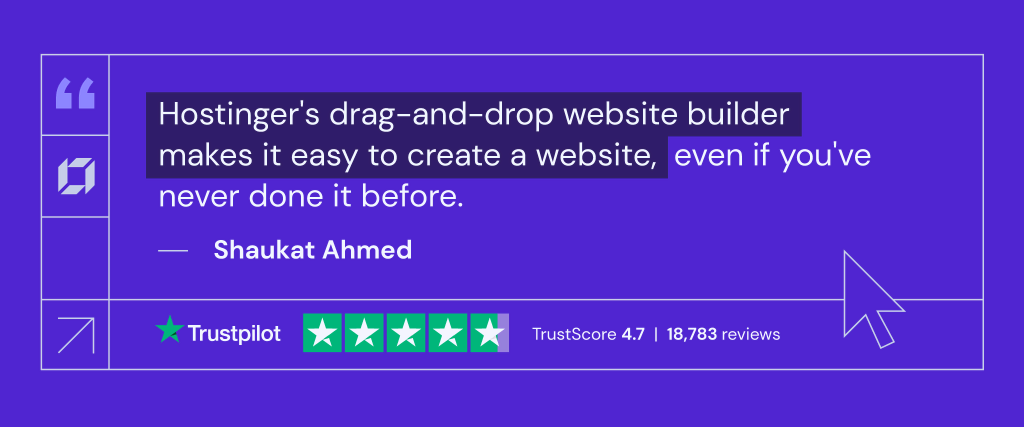
- Built-in SEO tools. Optimize your blog content and improve its search engine visibility with various SEO tools like a sitemap generator and meta editor.
Hostinger Website Builder also has an AI tool to help with writing, which we will cover in the next step.
5. Write Your First Blog Post
With the outline, blog headlines, keywords, and core content idea ready to go, it’s time to begin writing the body of your blog post.
When you write articles, remember to keep the paragraphs short since readers tend to skim through them. Create a first draft before you start writing to stay on track. Additionally, use transition words for a better flow and to keep readers’ attention.
It also helps to pick a unique angle or a problem to solve. A great blog post often addresses common issues or offers practical solutions to blog readers. Depending on the type of blog, you can also share your personal experiences to make the content more relatable and trustworthy.
Nowadays, you can also enlist the help of third-party tools like ChatGPT for blogging. However, this means relying on another platform to conduct basic blogging tasks.
Alternatively, users can leverage Hostinger Website Builder’s built-in AI Writer tool to speed up the writing process. Since it’s included in all of our website builder plans, you can edit your site and create content using AI within the same user interface.
The tool works by generating content based on the information you give. Select the tone of voice, content length, and blog post description. Once you’re ready, click Create content.
Then, adjust the content accordingly. You can also use the AI Writer as a reference, first draft maker, brainstorming tool, or simply to overcome writer’s block. Due to its multiple uses, it’s a handy tool for blog post editing.
Finally, a strong conclusion is essential. Summarize the key points, add valuable takeaways, and include a CTA to engage readers. Some of the most common CTA examples encourage readers to:
- Write a comment.
- Share opinions on the topic.
- Subscribe to your newsletter.
- Buy your product or service.
- Download an eBook or other learning materials.
6. Add Visual Elements
To further enhance your post, consider incorporating multimedia elements such as images and videos. Let’s start with the featured image.
Similar to YouTube thumbnails, a featured image serves as the first impression for potential readers. Therefore, it’s important to make it high-quality, appealing, and relevant to your content.
Next, start adding images throughout your post to help readers retain information better. Create your own images or use stock photos by downloading them from copyright-free sites like Unsplash or Pixabay.
Other than adding relevant images, here are some more visual elements to consider:
- Infographics. Infographics can increase site traffic by up to 12% and are excellent for educating readers. Use Canva or Piktochart to create them.
- Videos. Adding videos to your blog post can drive three times more inbound links compared to posts without. If you have a YouTube channel, embedding your video can be a great source for backlinks.
- Illustrations. An excellent alternative to stock images, using illustrations can help improve your blog’s uniqueness.
- Screenshots. Screenshots work well for how-to guides with actionable tips for readers to follow.
- Graphs and charts. Simplify numerical data and make it more appealing for readers. Use tools like Google Sheets or Excel to create graphs and charts quickly.
Whichever visual element you choose, Hostinger Website Builder helps you add multimedia files easily. Simply select the Add Elements option, choose Image or Video, and then upload or link to your content.
Take inspiration from various blog examples and how they arrange their photos and other visual elements.
7. Optimize Your Blog Post for Readers and SEO
Optimizing blog posts is essential for two main reasons – enhancing readability for your audience and improving visibility on search engines. We’ll explore how to optimize your blog posts for both readers and SEO.
Optimizing for Readers
To make your blog posts more reader-friendly, start by using clear and concise headings and titles. Break your text into shorter paragraphs to improve readability and aim for the three-sentence rule.
Use bullet points when applicable to ensure a clear structure and flow throughout your post. Bullet points make it easier for readers to skim content and grasp important details.
Additionally, stay consistent with your writing style and tone of voice, which should be aligned with your target readers. Aside from staying true to your branding, it also helps build a connection with your audience.
Optimizing for SEO
There are a few ways to optimize your blog for SEO. As we briefly mentioned, include keywords to help improve search engine rankings. Here are a few strategies you can follow:
- Add your focus keyword in the first three sentences of your article.
- Add keywords into the headings or subheadings.
- Add long-tail keywords whenever possible.
- Use tools like Surfer SEO to help determine how many keywords to add.
Then, craft a compelling meta description and title for your post. Keep your meta title length to 50-60 characters and your description length to around 150-160 characters. This ensures that they will be fully displayed in search results.
With Hostinger Website Builder, you’ll get insights on SEO opportunities for each page of your blog. The screenshot below shows a partially optimized website page, which lacks the SEO title and description required for search engines.
Additionally, Hostinger Website Builder lets you add image alt texts. These alt texts not only improve site accessibility but also help with SEO by providing keywords for search engines to index.
Similar to blog content, you can use our AI to help generate image alt text suggestions.
By paying attention to both the reader experience and SEO best practices, you can boost the performance and visibility of your blog posts.
8. Publish and Promote Your Blog Post
Before publishing the blog post, take a moment to proofread for any spelling mistakes and preview how your post looks on different devices. Once you’re satisfied with the content and structure of your article, go ahead and publish the blog post.
Now, promote your blog post to reach a wider audience. Here are a few social media sharing strategies for your blog posts:
- Sneak peeks. Share intriguing excerpts or insights from your post to boost interest.
- Value proposition. Clearly communicate what readers will gain by reading your post. Tie this value into the overall context of your social media content.
- Link placement. Consider adding your blog post link to your social media bio, making it easily accessible to interested readers.
- Use polls and surveys. Engage your audience with polls or surveys related to your content. Use the results as a conversation starter and link back to your blog for more detailed insights.
- Collaborate with influencers. Partner with niche-related social media influencers to share your content. Their endorsement can help boost your blog’s visibility and credibility.
If you have a customer email list, include your most recent post in the latest newsletters to alert subscribers about new content, driving traffic back to your blog.
Suggested Reading
9. Engage with Your Readers
A good blog post isn’t just about presentation and structure, but also reader engagement. It fosters loyalty and boosts interest in your content. The easiest way to achieve this is by replying to blog comments.
Be prompt when replying to comments, as it shows that you value readers’ input and are actively engaged in the dialogue. Taking the effort to personalize your responses can also convey a genuine understanding and appreciation of your readers’ perspectives.
Furthermore, you can build a solid online community by actively encouraging interaction within your comments section. Engage readers by asking follow-up questions to facilitate discussion.
Once you have solid engagement from your target readers, start practicing strategies for maintaining that engagement and turning new visitors into recurring ones. If you’re selling a product or service, recurring visitors are more likely to become your customers or clients.
Here are some strategies to maintain readers’ engagement:
- Be consistent in your content delivery. Setting the tone of voice, defining your topic, and planning your next blog post is crucial. Consistency fosters trust and reliability, keeping readers coming back for more.
- Post blogs regularly. Aim to publish a new blog post article on a consistent schedule. Create a content editorial calendar to help keep track. You can also make teaser content to build hype.
- Enable social sharing. Include social media sharing buttons in your blog posts to encourage reader participation and attract new readers.
- Offer rewards for reader engagement. This can be a giveaway, access to exclusive content, or discounts on your products or services.
By implementing these strategies, you can maintain a high level of engagement from your own blog audience. Remember to always listen to feedback and adapt your digital marketing strategy accordingly to keep the audience interested and coming back for more.
10. Monitor and Update Your Blog
Monitoring and updating your blog is a crucial part of maintaining its relevance and performance. After publishing content, regular monitoring allows you to understand how your posts are performing and identify areas for improvement.
Generally, there are two reasons to update your blog post. The first is stagnant performance numbers. If you notice that the engagement or traffic for a post is declining, it might be time to refresh the content.
The second reason is outdated information. For topics that are time-sensitive or evolve quickly, keeping the information current is essential to maintain credibility and usefulness.
To update your blog while preserving or enhancing its SEO score, consider the following tips:
- Review current content. Assess the post to determine which sections need an update. Look at metrics such as bounce rate, time on page, and user comments for insights.
- Update with added value. Focus on adding new, valuable information to the post rather than just making minor tweaks. This might include newer data, recent developments, or expanded explanations of complex points.
- Refresh keywords. Analyze current keyword performance and trends. Update your post to include relevant, high-performing keywords, ensuring they’re integrated naturally into the content.
- Maintain URL structure. Avoid changing the post’s URL. If a change is necessary, make sure to include a 301 redirect from the previous URL to preserve the link value.
- Update internal links. As you publish new content, add internal links to other posts to encourage more engagement, distribute page authority, and enhance the site structure.
- Republishing date. Consider updating the publication date to reflect the most recent update, signaling to both readers and search engines that the content is relevant.
How to Make a Blog Post With WordPress – Video Tutorial
Do you prefer to publish a blog post in WordPress? Check our quick video rundown below:

Conclusion
Writing blog posts is an excellent approach to building an audience and getting your ideas out there. Good blogs can inform, entertain, and motivate people, building a group of loyal readers.
To recap, here are the ten steps on how to write a good blog post:
- Understand your audience.
- Research relevant topics.
- Plan your blog post.
- Set up your blog.
- Write your first blog post.
- Add visual elements.
- Optimize your blog post for readers and SEO.
- Publish and promote your blog.
- Engage with your readers.
- Monitor and update your blog.
Creating engaging blog content is about connecting with your readers. Make sure to follow effective blogging practices like improving your writing skills and building on your search engine optimization strategy to ensure long-term success.
How to Write a Blog Post FAQ
Read the most frequently asked questions on how to write blog posts.
What Is a Blog Post?
A blog post is an article on a website’s blog section. It offers insights, information, or entertainment on various topics, reflecting the writer’s views or expertise.
How Long Should My First Blog Post Be?
A blog post should ideally be between 1,500 and 2,000 words, balancing detail with readability to engage your audience effectively. However, this is not a hard rule and can be adjusted depending on the intent, target audience, and topic.
What Makes a Blog Post Successful?
A great blog post captivates its audience with valuable content, a compelling headline, clear writing, and interactive elements like visuals and a call to action, driving engagement and social shares.
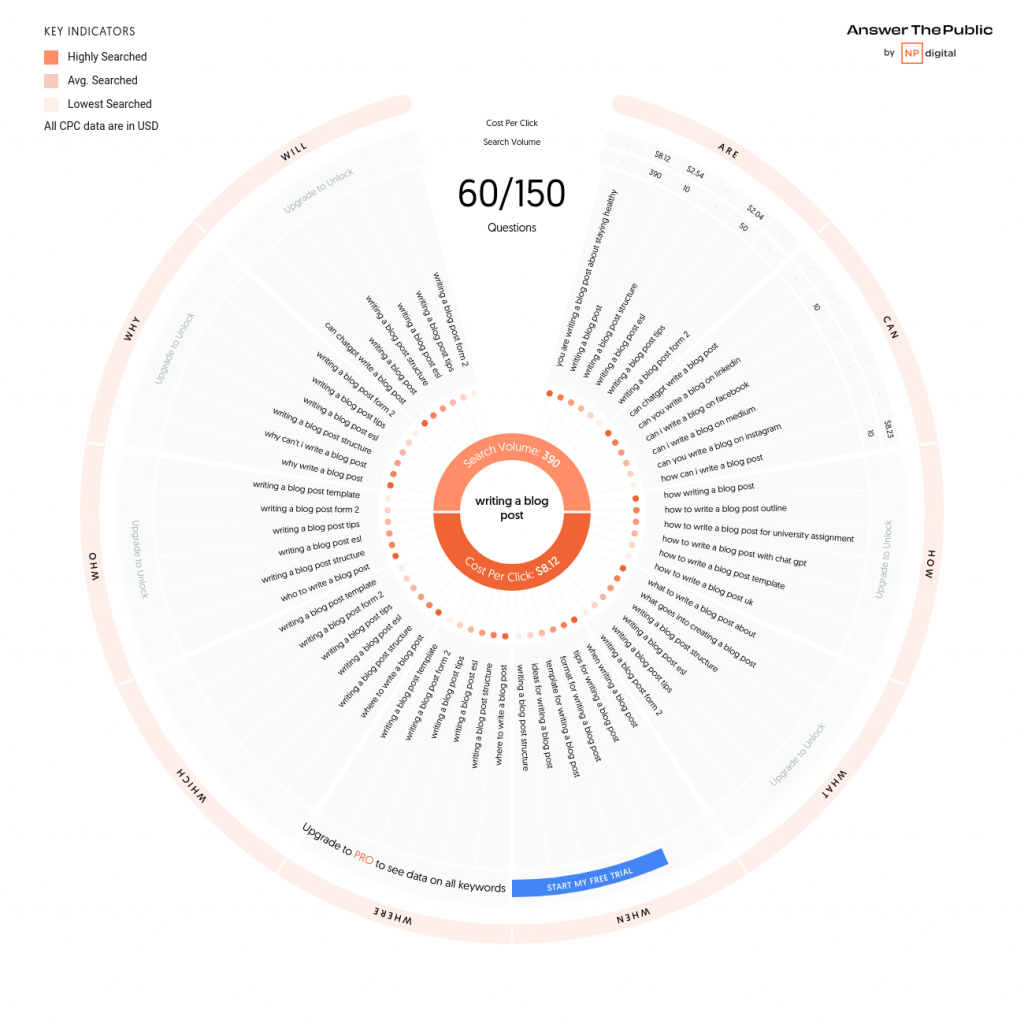
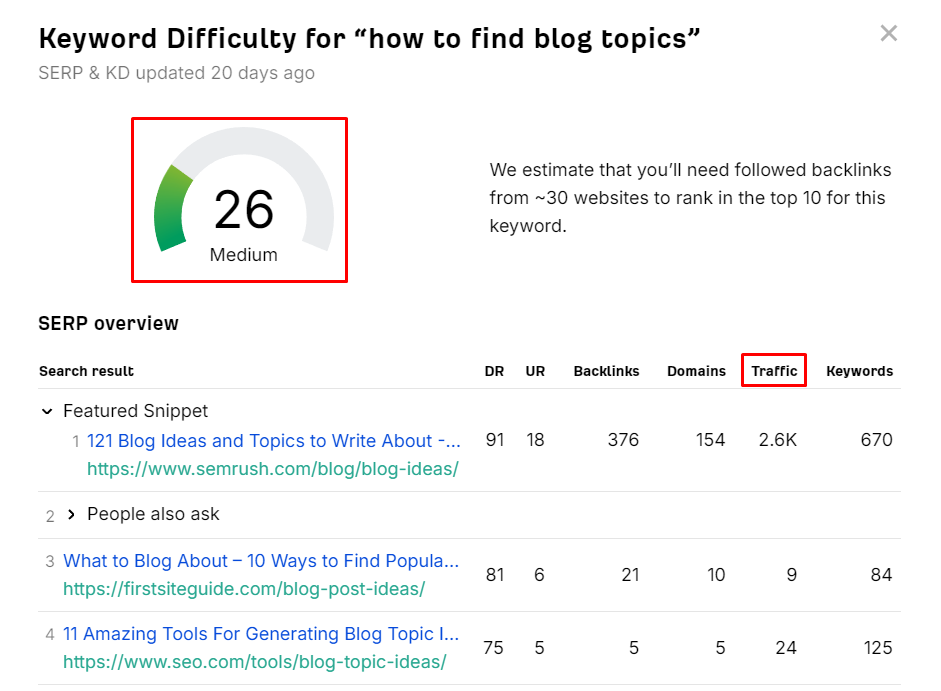

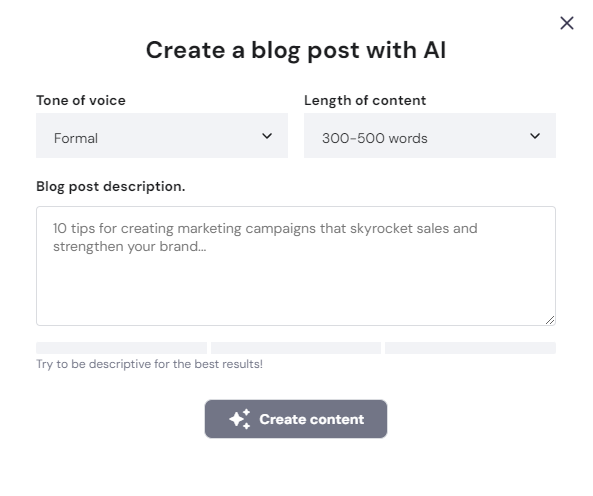
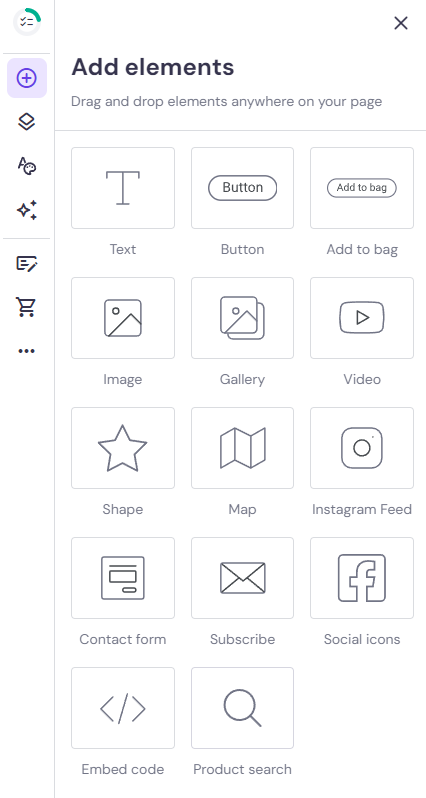
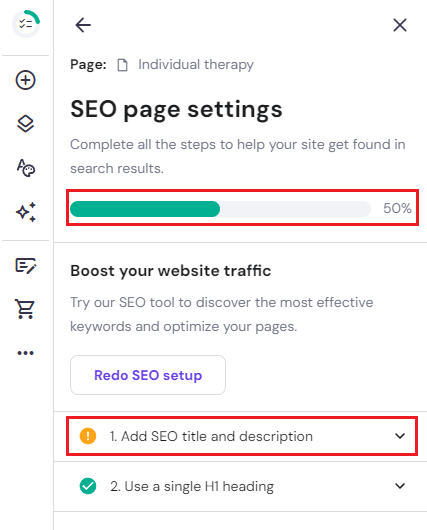
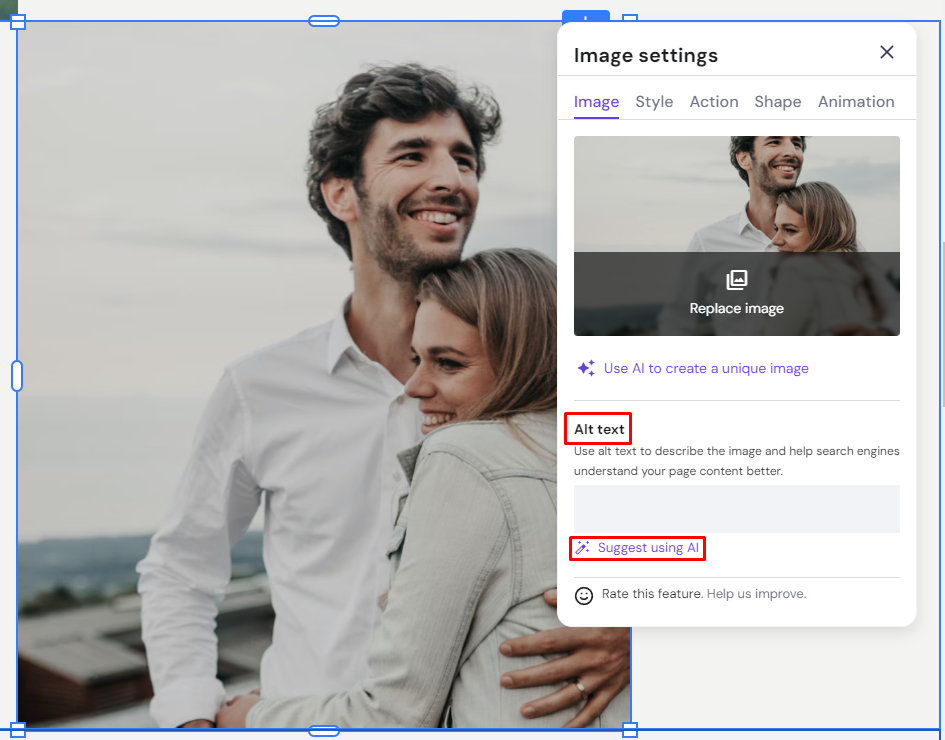



Comments
March 18 2022
Thank you so much Hostinger for a perfect blog for beginners.
March 22 2022
Happy to hear it was useful :)